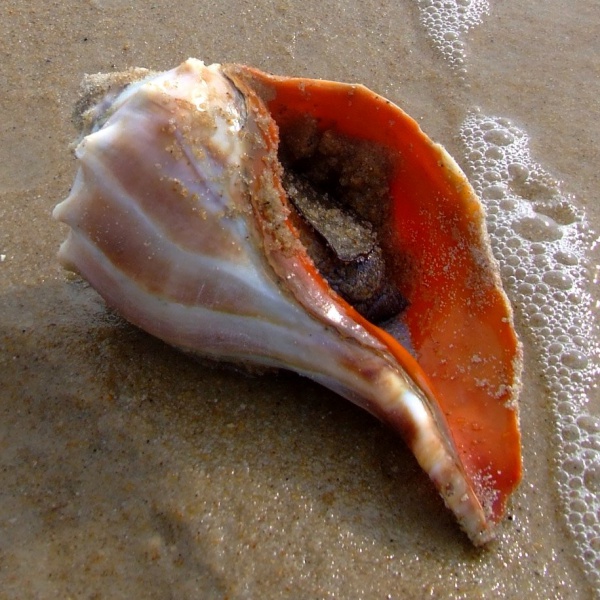Facts About Knobbed whelk
The knobbed whelk is a captivating sea snail from the Busyconidae family, inhabiting the North Atlantic coast of North America from Cape Cod, Massachusetts, to northern Florida. It is particularly abundant along the Georgia coast. This sea snail boasts a robust, right-handed shell featuring six clockwise coils adorned with knob-like projections and a striking orange aperture.
These snails exhibit notable migratory behavior, moving between deep and shallow waters according to the season. In shallower waters, knobbed whelks actively hunt marine bivalves. They utilize their shells to pry open the bivalves and then consume the flesh using their radula, a specialized feeding organ.
Reproduction for knobbed whelks occurs during their spring and fall migrations. They lay eggs in protective capsules that form structures known as "Mermaid's Necklaces." However, juvenile whelks face numerous threats, including predation by various marine creatures such as crustaceans and fish.
Humans also find the knobbed whelk valuable. It is a popular ingredient in dishes such as salads and chowders. Historically, Native American tribes used their shells to craft wampum, which served both as currency and as a significant trade item.

 Mexico
Mexico